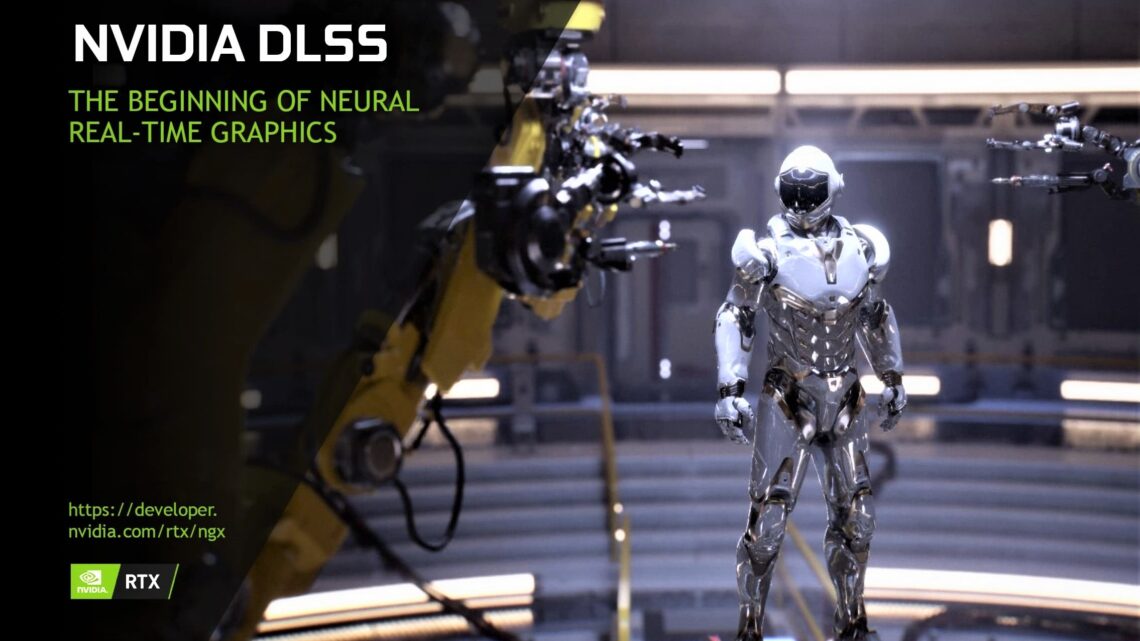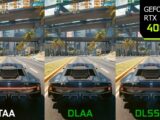
What is NVIDIA DLAA and Its Ultimate Capabilities?
August 8, 2023In the ever-evolving landscape of gaming technology, NVIDIA has consistently been at the forefront of innovation, pushing the boundaries of visual fidelity and performance. One of their latest advancements, NVIDIA DLAA (Deep Learning Anti-Aliasing), has been making waves in the gaming community. In this article, we delve deep into the world of DLAA, exploring its features, capabilities, and how it is transforming the gaming experience.
What is NVIDIA DLAA?
NVIDIA DLAA, short for Deep Learning Anti-Aliasing, represents a cutting-edge approach to combating a common visual artifact known as aliasing. Aliasings are the jagged edges and pixelation that can occur in computer-generated graphics, particularly noticeable in diagonal lines and curves. Traditional anti-aliasing techniques have been used to alleviate this issue, but DLAA takes it a step further by leveraging the power of artificial intelligence.
How Does DLAA Work?
DLAA utilizes AI algorithms to analyze and enhance in-game visuals in real time. The technology recognizes jagged edges and pixelated areas and then applies complex algorithms to smooth out these imperfections. By doing so, DLAA improves the overall image quality, resulting in more visually appealing and realistic graphics. Unlike some other AI-driven technologies, DLAA does not involve upscaling; instead, it focuses solely on the improvement of image quality while maintaining the game’s native resolution.
The Capabilities of NVIDIA DLAA

DLAA introduces several capabilities that set it apart from traditional anti-aliasing methods:
1. Maintaining Native Resolution
Unlike its counterpart DLSS (Deep Learning Super Sampling), which involves upscaling the resolution for enhanced visuals, DLAA prioritizes maintaining the game’s native resolution. This is a boon for gamers who value visual fidelity without compromising on the resolution they are accustomed to.
2. Reduced Performance Impact
DLAA’s AI-powered approach results in a reduced performance impact compared to conventional anti-aliasing techniques. This means that gamers can experience smoother graphics and better image quality without experiencing significant drops in frame rates, provided their GPUs meet the necessary requirements.
3. Real-Time Enhancement
DLAA operates in real-time, constantly analyzing the game’s visuals and making on-the-fly adjustments. This dynamic approach ensures that the gaming experience remains immersive and visually appealing without interruptions.
4. Compatibility and Integration
NVIDIA has been actively working to integrate DLAA into a growing list of games. As the technology gains momentum, more and more titles are becoming compatible with DLAA, expanding the reach of this innovation and offering gamers a broader selection of enhanced visuals.
5. Improved Gaming Aesthetics
The primary goal of DLAA is to enhance the aesthetic quality of games. By eliminating jagged edges and pixelation, DLAA transforms the gaming experience into a visually stunning journey, immersing players in more realistic and captivating virtual worlds.
When to Use NVIDIA DLAA
DLAA is a fantastic addition to a gamer’s toolkit, but knowing when to use it can optimize the experience further. Since DLAA primarily focuses on image quality enhancement, it’s ideal for gamers who prioritize visual fidelity over other factors. Gamers with GPUs capable of comfortably handling their desired resolution and frame rates will benefit the most from DLAA, as the reduced performance impact will ensure smoother gameplay.
DLAA vs. Traditional Anti-Aliasing
To understand the significance of DLAA, it’s essential to compare it with traditional anti-aliasing techniques. Traditional methods, such as MSAA (Multisample Anti-Aliasing) and FXAA (Fast Approximate Anti-Aliasing), have served as effective solutions to combat aliasing. However, DLAA’s AI-driven approach introduces a new level of sophistication and effectiveness. While traditional methods may sometimes result in blurring or loss of detail, DLAA’s algorithms are designed to preserve and enhance image quality while eliminating aliasing artifacts.
The Future of Gaming Graphics: DLAA’s Potential
NVIDIA’s DLAA has already made considerable strides in improving the visual quality of gaming. As technology continues to evolve, it holds the potential to become an integral part of the gaming experience. With a focus on maintaining native resolution, reducing performance impact, and delivering real-time enhancements, DLAA could shape the future of gaming graphics. As more games integrate DLAA and as NVIDIA refines its algorithms, we can anticipate an even more visually stunning and immersive gaming landscape.
In conclusion, NVIDIA DLAA stands as a remarkable innovation that underscores the power of AI in enhancing gaming graphics. By targeting aliasing artifacts and leveraging complex algorithms, DLAA elevates image quality while maintaining the native resolution of games. With its compatibility, reduced performance impact, and real-time enhancements, DLAA is a game-changer for gamers seeking the perfect balance between visual fidelity and performance. As the gaming industry continues to embrace AI-driven technologies, NVIDIA’s DLAA is undoubtedly a significant step forward, promising a future where graphics are not just realistic, but breathtakingly immersive.



